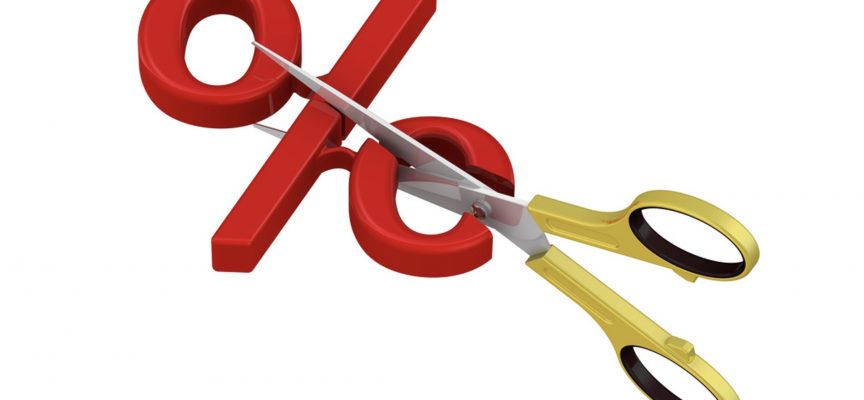Get ready for rate cuts as auto bubble has burst and US economy slows.
Car Market
August 3 (King World News) – The Kobeissi Letter: Car Market Update:
1. Vehicle debt at record $1.5 trillion
2. 10% of all consumer debt is auto related
3. Used car payments up 20% in 2 years
4. Average used car is $10,000 above fair value
5. 1 in 12 Americans are 90+ days late on car payment
The car market bubble is next.
Getting Closer To Rate Cuts
Sven Henrich: First comes the money supply expansion, then comes the inflation, then come the rate hikes, then the recession as demand collapses and reverses inflation, then come the layoffs and then come the rate cuts…
Look At Who Is A Big Investor In This Soon-To-Be Self Funding Gold Exploration Company! To learn more click here or on the image below.
Finally
Peter Boockvar: If there is a change in tone by Fed members, which yesterday certainly sparked the jump in yields, it is similar to a parent that is FINALLY telling the kids that you’ve had enough candy, no more. For decades the Fed always gave the markets more candy, especially when the kids cried out for it. Now, the kids are going to have to do without as long as inflation is at the very unsatisfactory levels that it’s pacing at, even with an expected fall. I now expect year end inflation to settle out at something close to 7-8%, better than 9% but still…If CPI is up .2% per month for the 2nd half of 2022, yr end CPI will still be up 7.5% y/o/y.
High End vs Low End
We know there is a clear bifurcation in the US economy right now between the lower end spending habits of the consumer versus the upper end. In Simon Property Group’s earnings call on Monday night, the largest enclosed mall owner in the country with mostly class A properties, and a stock I own, CEO David Simon answered this question, “Are you seeing any difference in tenant sales performance between the higher end and luxury tenants versus the more main three brands (such as JC Penney), presumably the latter would be more impacted by the inflation issues?”
His answer, “I would absolutely, we definitely have seen that where the value oriented retailers or – there’s no question the consumer that is pressed on discretionary income is dealing with a very difficult situation with food, obviously, gas and dwelling. So, and they’re reining in their spend. So, there’s no question about that. But we haven’t really seen that at all in kind of the better brands. And like I mentioned earlier, SPARC, like the Brooks Brothers, the Luckies of the world are doing very well. But where you do see it a little bit in the value-oriented retailer or the younger consumer that suddenly gas has taken a lot out of the pocket book.”
Lower End Car Sales Tanking
On the consumer spending theme, Wards said yesterday that July vehicle sales totaled 13.35mm at a SAAR, a touch below the estimate of 13.4mm and that compares with 14.75mm in July 2021, 14.52mm in July 2020 and 16.82mm in July 2019. Of course we can blame the lack of new car inventory but we now have to assume record high prices along with the jump in financing costs are clipping demand. Speaking of which, BMW is trading down 5.3% today after reporting earnings and getting to the point that Simon was making, BMW said they are seeing a slowing in the sales of 1 and 2 Series compact cars but sales are stronger for the X series SUV’s and the 5 model sedans. They also remained concerned on chip supply and the energy situation in Europe.
The Logistics Managers Index for July came out and it fell to 60.7, down 4.3 pts from June. It’s the lowest print since May 2020 and they blamed the Transportation metrics.
Logistics Index Lowest Since May 2020
They saw “levels of growth in available Transportation Capacity that we have not seen since April of 2019. Interestingly, the downshifts we observed in transportation metrics were much more muted in the last week of July, leaving open a possibility for a bit of recovery as we move towards peak season. Warehousing and Inventory metrics continue to buoy the logistics sector. Inventory levels remain high, and warehouses continue to struggle to hold and manage the volume.”
They said their Transportation Prices component fell below 50 and “it is technically a state of contraction, the first since May of 2020” and they cite the rise in Transportation Capacity. On the inventory situation, they said “firms are clearly working to wind inventories down, with Inventory Levels now only 2.4 pts higher than the rate of expansion we saw at this time last year.”
Ships Bailing On Long Beach And LA
This was interesting commentary on the port and ship situation. “The number of ships idling outside the ports of LA and Long Beach are down nearly 75% from early this year. However, it is not because less cargo is coming into the country, what we are actually seeing is that imports are being dispersed. In the last week of July there were 153 vessels idling near US ports, with the majority of them in the previously lesser used Gulf and East Coast ports, and some shippers have even considered increasing seasonal utilization of Great Lakes ports.”
Mortgage Rates Falling
With the 30 bps drop in the average 30 yr mortgage rate to 5.43%, the lowest in two months, mortgage applications rose slightly. Purchases were up 1% w/o/w but remain down 16% y/o/y. Refi’s grew by 1.5% w/o/w but are lower by 82% y/o/y. We clearly know the challenges facing the housing market.
China & Singapore
China’s private sector July Caixin services PMI rose 1 pt to 55.5. The estimate was for a drop to 53.9. Covid restrictions are still obvious but less so and that is why we saw the bounce. On pricing, “Input costs and prices charged were stable. Overall, cost pressures grew marginally as food prices and wages increased, although the prices of some bulk commodities fell.” On the outlook, “Business owners held a more positive outlook. The gauge for future activity expectations hit its highest point in 8 months. However, concerns over the possibility of future Covid outbreaks remained.” And that is an obvious and continuous concern.
Singapore’s July PMI rose to 58 from 57.5 while Hong Kong’s was little changed at 52.3. Markit said this on the Singapore figure, “Rapid expansions in output and new orders largely underpinned overall sector growth and reportedly stimulated increased purchasing activity and pre-production inventory building…That said, a few factors have the potential to dampen future demand and subsequent expansion across Singapore’s private sector. Production capacities may start to become constrained as a result of declining employment levels whilst more worryingly demand may start to decline as a result of sustained inflationary pressures.” Singapore stocks remain very attractive.
Inflation Stress In Europe
Reflecting the inflation stress, retail sales in June in the Eurozone fell 1.2% m/o/m, worse than the estimate of no change and they are down 3.7% y/o/y.
We also saw the July Eurozone services PMI be revised to 51.2 from the initial print of 50.6 but below the 53 seen in June. Markit said “A fading post-pandemic restrictions bounce and cooling demand pressures reportedly drove the weaker expansion at the start of the third quarter.” New orders fell below 50 for the first time since April 2021 and “Panel members frequently commented on higher prices as a reason for lower demand.”
European bonds are selling off after the US Treasury weakness seen yesterday and the euro is higher. The ECB has quite the job ahead.
Services And Prices Paid
The July ISM services index rose to 56.7 from 55.3 and that was better than the estimate of 53.5. It compares with 55.9 in May and 57.1 in April. New orders rose 4.3 pts to 59.9, a 4 month high while backlogs slipped to 58.3. Inventories fell 2.5 pts to 45 and below 50 for a 2nd month. The high inventory rhetoric is more on the goods side. Ahead of Friday’s payroll report, employment was up 1.7 pts but below 50 for the 3rd month in the past 4 at 49.1. Much of this according to ISM has more to do with the supply of labor rather than the demand but we know the demand is slowing. Supplier deliveries eased further with a 4.1 pt drop and prices paid declined by 7.8 pts to 72.3, the lowest since February 2021.
For perspective, the 10 yr average in prices paid is 60.2. Of note, for the first time in a while, not all 18 industries surveyed said they paid higher prices, 16 did.
While the headline number improved, the breadth of growth deteriorated as 13 industries of 18 asked saw growth vs 18 in June, 14 in May and 17 in the two months before that. Three industries saw a contraction, including retail and finance/insurance.
ISM highlighted the headline number in its summary but laid out the risks we’re well aware of, “Availability issues with overland trucking, a restricted labor pool, various material shortages and inflation continue to be impediments for the service sector.”
US Economy Slowing Further
My bottom line, with the headline increase but the shrinking breadth of economic growth points to the growing mixed bag, but slowing trend of the US economy.
I also want to make something clear on the continued recession or no recession debate. Outside of the Covid mandatory shutdowns, a once in a lifetime event, there is not an economic switch that gets turned on and off all at once. There is a dimmer instead that calibrates up and down with different businesses and industries feeling differing flows of activity at differing times. When we have a slowdown, it’s sort of like a virus, to use that analogy, that doesn’t infect everyone all at once but percolates throughout over time. Here are some notable quotes that highlight this progression of events.
“Restaurant sales have softened the past few weeks (due to) post-holiday and seasonality factors, but we’re also hearing because of consumer pressures, particularly fuel and food prices. Staffing remains a challenge in some markets. — [Accommodation & Food Services]
“Interest rates have significantly impacted the homebuilding market. Cancellation rates have increased, as homebuyers can no longer afford the monthly payment. Traffic to our communities is down. Inflation has sidelined many would-be buyers.” — [Construction]
“Can feel the economy weakening. Clients are making appropriate moves in anticipation of a recession.” — [Management of Companies & Support Services]
“Hiring demand remains robust in most industry sectors. Tech has had a slowdown in hiring and layoffs. It’s still a candidate’s market, as the number of job openings across all skill levels and positions remains far greater than the number of candidates for those roles.” — [Professional, Scientific & Technical Services]
“(We are) in inventory reduction mode, attempting to match inventory levels to current lower sales trends.” — [Retail Trade]
“Holding steady, but some headwinds are definitely ahead on the economic front. However, supply chain issues appear to be easing, though still not great.” — [Utilities]
“Food service remains strong. Retail is softening as the mass is overly concerned about inventory and consumer spending.” — [Wholesale Trade]
ALSO RELEASED: PENSION FUND CRISIS: Pension Funds Now Gambling On Riskier Assets CLICK HERE.
ALSO RELEASED: CAUTION BEARS: Stock Market May Continue To Surprise On The Upside CLICK HERE.
ALSO RELEASED: Gold Miners, Crisis In Germany, Plus Economic Distress Indicator CLICK HERE.
ALSO RELEASED: US Dollar And Gold On The Move CLICK HERE.
ALSO RELEASED: The Great Recession Is Upon Us And It Will Impact Gold, Interest Rates And The US Dollar CLICK HERE.
ALSO RELEASED: Michael Oliver – Gold Market Now Close To Unleashing Major Upside Target CLICK HERE.
To listen to James Turk discuss this crisis and how it will impact major markets including gold CLICK HERE OR ON THE IMAGE BELOW.
To listen to Alasdair Macleod discuss this week’s major bottoming action in gold, silver and the mining shares CLICK HERE OR ON THE IMAGE BELOW.
© 2022 by King World News®. All Rights Reserved. This material may not be published, broadcast, rewritten, or redistributed. However, linking directly to the articles is permitted and encouraged.














